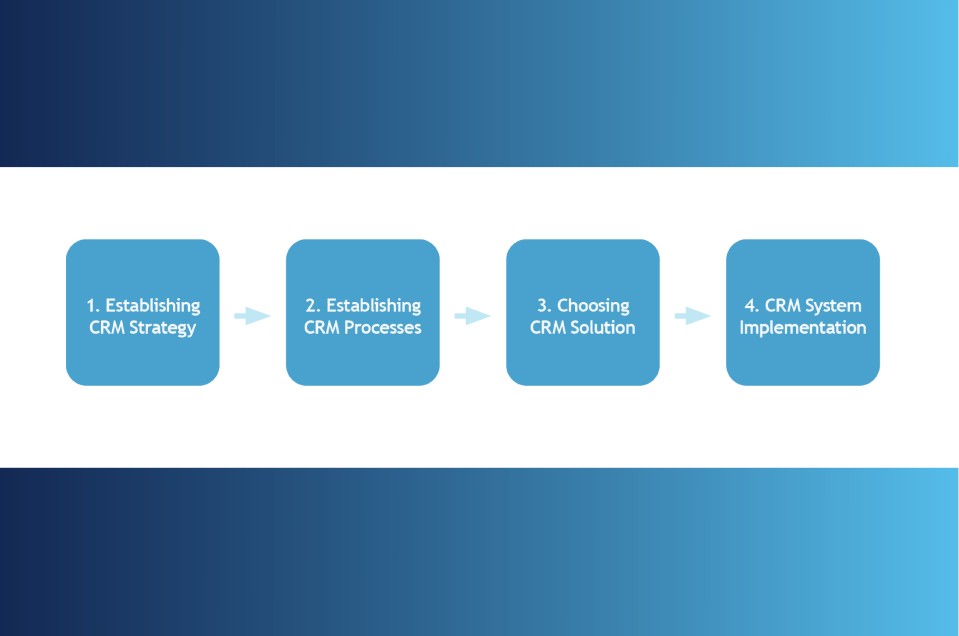Total Quality Manage...
18078 | 6 Apr 2023

Proper Customer Relationship Management is a key to success that companies often overlook. Customers have many choices in today's highly competitive environment, so we cannot take their loyalty for granted. The ultimate goal of customer management is to build and maintain good relationships with customers and prospects. Companies should have a Customer Relationship Management (CRM) System because it can help them to better manage and organize customer data, provide more personalized and effective service, automate and streamline customer-related processes, and gain valuable insights and analytics. These benefits can help improve the quality of customer relationships, increase customer retention and satisfaction, and drive sales growth. In today's competitive business environment, having a robust CRM system can be a key differentiator for a company and help them to gain a competitive edge.
Customer Relationship Management is the process of managing and coordinating an organization's interactions with its customers and potential customers. For a successful CRM system implementation, companies must follow four steps. The content within those steps must be adapted to their needs and organizational characteristics.
The meaning of Customer Relationship Management has changed significantly over the years. CRM is a term that was initially defined and designed to improve customer service. Today, however, it refers to the entire corporate strategy. In order to implement a CRM system, it is necessary to have a customer-oriented strategy in place, which must be based on the clear goals and vision of the company, and consistent with the business plan. A Customer Relationship Management strategy aims to increase revenue and improve customer service through a combination of processes, actions, and technologies.
In accordance with the CRM strategy, the company must also establish processes for managing customer relationships. The formerly traditional product-driven process models are now customer-driven. Business-driven processes include processes that increase the efficiency of operations, such as budgeting and planning, while customer-driven processes include sales, marketing, and customer service. In order to establish CRM processes in the company, the activities and process participants in the company must be defined and precisely aligned with the CRM strategy. It is also necessary to create a process plan for introducing the level of automation of CRM processes in the company and a plan for monitoring key performance indicators (KPIs). In addition to the above, companies should also define the level of monitoring of information flows and create conditions for continuous monitoring and updating of the CRM process.
To manage customer relationships successfully and as efficiently as possible, a corresponding software solution must also be implemented in the CRM system. Selecting and implementing a Customer Relationship Management (CRM) solution can take time and resources, but the benefits pay off in time and cost savings. Regardless, companies appreciate that the benefits of such an implementation are worth all the resources invested. CRM solutions represent one of the best technological assets in which companies can invest their resources today. Customer Relationship Management solutions act as a single repository that integrates sales, marketing and support activities and simplifies the implementation and control of CRM processes. Most Customer Relationship Management solutions provide some level of automation to help companies interact with current and potential customers. When selecting an appropriate CRM solution, companies must take into account the previous steps, as the chosen solution should be consistent with the company's CRM strategy and compatible with CRM processes to achieve maximum system efficiency.
After selecting a suitable CRM solution successfully, the last step of the CRM system implementation process follows. A CRM system involves intertwining people, processes, and technology to understand customers, which must be kept in mind throughout the CRM implementation process. Customer Relationship Management (CRM) implementation is the process of setting up and running a CRM solution, which requires careful planning of system installation, integration, customization, testing and reporting phases to align with company strategy and processes.
As already mentioned, CRM processes must be oriented in such a way as to enable continuous monitoring and updating of the entire CRM system, which includes strategy, processes, solutions and implementation. The customer relationship management life cycle should also be consistent with the customer life cycle through the sales funnel.
What are your thoughts on the subject above? Feel free to post a comment or start a discussion.
Leave A Comment